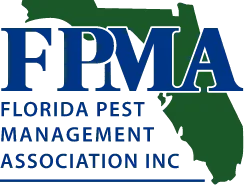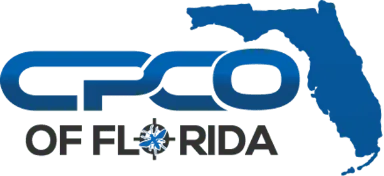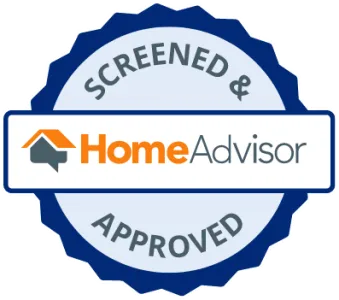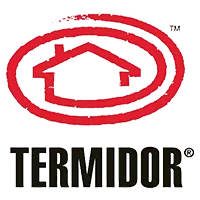Professional Integrated Pest Management
Integrated Pest Management (IPM) is a long-term pest control process that’s environmentally sensitive, backed by scientific research and highly effective. The process uses a combination of practical techniques to manipulate environmental factors that enable the target pest to thrive. Pesticides are only used in the IPM process when the target organism is resistant to other pest removal methods.
At Price Termite & Pest Control, serving Brevard, Indian River, Saint Lucie, Martin, Palm Beach and Broward County, Florida, we manipulate the lifecycle and environmental interactions of pests and apply pesticides judiciously to minimize risks to people, property, and the environment.
Integrated Pest Management is implemented in four primary steps:
1. Set Action Pest Thresholds
Price Termite & Pest Control works with each customer on an individual basis to determine tolerable population levels for specific pests before control measures are necessary. We set custom thresholds for each customer because we understand that personal tolerances vary. Just because a pest is present doesn’t mean there is a need for control. We’ll help you determine your individual economic, health and aesthetic thresholds for specific pests, as well as at which point control measures must be taken.
Your Price Termite & Pest Control technician will make recommendations based on the following factors:
- The species of pest in question and its appearance
- Personal tolerance
- The surrounding environment
- The type of business or structure where the pest is present
2. Monitor and Identify Pests
At Price Termite & Pest Control, we believe that prevention is the best solution to a pest problem. Our educated technicians use visual cues and trapping and monitoring devices during the inspection process to accurately identify pests and monitor their presence and concentration. We also focus heavily on client participation. Client participation is essential if a pest management program is to be successful. All of our commercial clients receive a pest sighting logbook to help monitor and record pest activity. Some of the things we instruct our clients to check for include:
- Evidence of pests, such as rodent fecal pellets
- Conditions that are favorable for pest activity
- Moist, warm and humid areas
- Possible pest food and water sources
- Interior and exterior areas where pests tend to live and hide, such as trash cans, drains and building perimeters, including weeds and debris areas
- Common points of entry for pests, such as doors and loading docks
3. Pest Prevention
From sanitation measures to mechanical trapping devices, we use a variety of methods to control pests and lower the risk of an infestation. Good sanitation is the first line and perhaps the easiest method of defense to control pests culturally and to reduce their reproduction, dispersal, and survival practices. We’ll assess the interior and exterior of your facility at every inspection, document areas of improvement and follow-up with recommendations to improve sanitation deficiencies. We typically identify sources of food, water, harborage and concealed pathways of travel that clients should eliminate to improve their sanitation situation. Limiting pest access to the interior of a building via exclusion is another key component of IPM. Most insects gain access to buildings from the outside, so we often suggest caulking and sealing gaps and holes, replacing screens and repairing damage around entryways, pipes, drains and other possible points of access to keep pests out.
Lastly, mechanical trapping devices are implemented as a preventative measure to catch any pests that do gain access beyond the exclusion points. We use glue traps, rodent multi-catch devices and insect lights to capture flying insects and crawling rodents, such as mice and rats.
4. Pest Control Methods
For any pest problem, there are a variety of pest control methods to choose from. At Price Termite & Pest Control, our IPM program includes a careful and thorough evaluation of the appropriate control methods, both for effectiveness and impact on human health, animal life and other parts of the ecosystem.
- Physical – Physical controls can either exclude pests out of interior buildings or make the environment unsuitable for their establishment and survival. At Price Termite & Pest Control, we manipulate environmental conditions, such as light with anti-attractant or repellent light bulbs, temperature with heat treatments and relative humidity with a dehumidifier to physically control pets.
- Mechanical – These include many of the same devices and traps used to prevent pests, such as insect light and glue traps. Household vacuum cleaners and spider/cobweb brushes also fall into this category.
- Chemical – Although the premise of IPM is to reduce the use of pesticides, pesticides are still a key and necessary component of IPM. At Price Termite & Pest Control, we only use pesticides when needed, and often in combination with other pest control methods. Our technicians select pesticides discerningly and always follow the application guidelines as directed to minimize possible harm to non-target organisms, pets, people and the environment.
Price Termite & Pest Control Integrated Pest Management programs include ongoing assessment and monitoring of pest levels and sanitation needs to prevent new or recurring pest problems.
In addition to our monitoring practices, we keep thorough records of pest activity and any pesticides we use during each follow-up visit.
If you’d like to schedule a FREE pest inspection or learn more about how your home or business can effectively manage pests with the Price Termite & Pest Control’s Integrated Pest Management approach to pest control, call us at (888) 429-9725 or contact us online.







